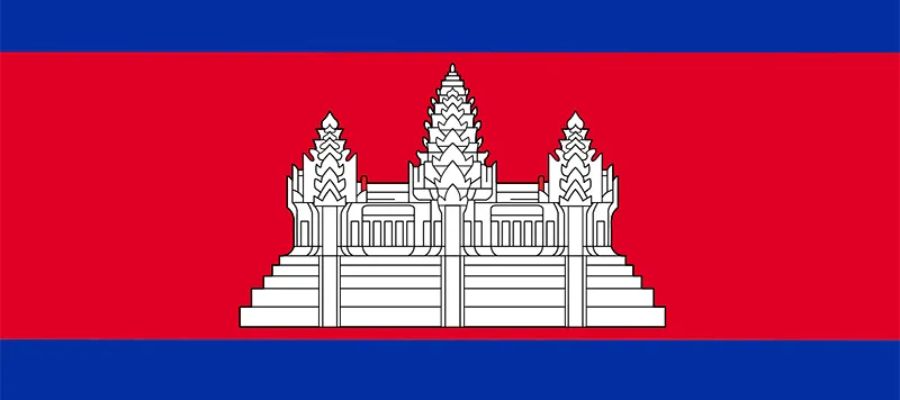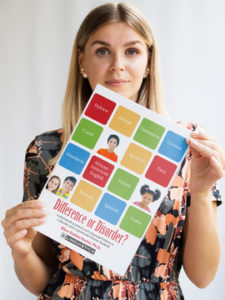Speech-language pathologists in schools, clinical settings, and hospitals are often asked to evaluate individuals who speak a language they do not speak. Often these individuals speak some English but it is not their first language, and levels of proficiency may vary. That leaves us with the challenge of conducting an evaluation with an interpreter and needing to learn the Khmer speech and language patterns of the individual’s native language. We’ll look at Khmer speech sounds and language patterns in this post. Khmer (pronounced Kuh-MY) is also known as Cambodian and is the official language of the Kingdom of Cambodia
Understanding Difference or Disorder for Khmer speakers learning English
Understanding how to determine whether speech and language patterns are differences or are indicative of a disorder is critical. A must-read for this process is Difference or Disorder: Understanding Speech and Language Patterns in Culturally and Linguistically Diverse Students. Pair the process from the book with the information in this post to effectively evaluate students who speak the Cambodian language of Khmer. You will find information about Khmer speech sounds and language patterns in this post so you can effectively evaluate Khmer-speaking children.
Khmer / Cambodian Speakers in the United States
According to the Pew Research Center, there are more than 300,000 Cambodians living in the United States. Los Angeles has the largest population of Cambodians, with approximately 41,000, followed by Boston, Seattle, Philadelphia, Stockton, CA, Washington, D. C., Riverside-San Bernardino, CA, Providence, RI, Minneapolis-St. Paul, and San Francisco. California has the largest population of Cambodians in the United States. This is in large part due to a program that Cambodia and the United States created in the 50s and 60s for Cambodian students to attend California colleges and universities. Then in the mid and late 1970s 160,000 Cambodians were admitted to the United States as refugees when the Khmer Rouge took control of Cambodia. If you are interested in learning more, Julie Lun wrote a great article for RespectAbility.org or you can read more at History.com about the Khmer Rouge regime.
I recently was asked to test a student who was born in the United States, moved to Cambodia at 18 months of age, and returned to the United States two and a half years later. Understanding similarities and differences between Khmer and English was critical to effectively diagnosing a speech disorder and a language disorder.
In this post, we will share information about the Khmer language spoken by those from Cambodia.

Where is Khmer spoken?
Khmer is the official language of Cambodia spoken by about 15 million people in Cambodia and surrounding countries, such as Thailand, Laos, and Vietnam. Mustgo reports that there are also relatively large Khmer-speaking communities in China, Canada, France, and the United States.
What language family does Khmer originate?
Khmer is also known as Cambodian, and belongs to the Austroasiatic language family.
A variation of the Brahmi script is used to write Khmer.
| Latin Script | Bilinguistics provides professional development for speech pathologists worldwide. |
| Brahmi Script Variation | Bilinguistics ផ្តល់នូវការអភិវឌ្ឍន៍វិជ្ជាជីវៈសម្រាប់អ្នករោគនិយាយទូទាំងពិភពលោក។ |
| Transliteration | Bilinguistics phtal nouv karoaphivodtho vichcheachiv samreab anak rok niyeay touteang piphoplok. |
Are there different dialects of the Khmer language?
There are five main dialects of Khmer: Battambang, Phnom Penh, Northern Khmer, Southern Khmer, and Cardamom Khmer.
Customary Greetings and Nonverbal Interactions in Cambodia
- Cambodians typically greet each other with a bow and palms together at the chest level. This greeting is referred to as Som Pas. A slight bow is used for casual greetings and a deeper bow and higher hands are used to show deep respect.
- If someone greets you with Som Pas it would be disrespectful not to return the greeting.
- For people who are less familiar to you, it is common to use a title before their given name (equivalent of Ms. Ellen or Mr. John) rather than with their family name.
- Titles are also used in informal interactions between family and friends. There are different titles for different ages equivalent to grandfather/grandmother, aunt/uncle, and brother/sister. Respectively, they are: Ta/Yeay, Po/Ming, Bang/Srey.
- Respecting elders is an important part of Cambodian culture. When handing an object to an elder, always use both hands as a sign of respect.
- It is an insult to touch someone’s head, which is considered sacred because it represents one’s intelligence.
- Cambodians consider feet to be unclean. Thus, feet should never be pointed at anyone or used to touch someone. Removing ones shoes prior to entering a temple or one’s home is a sign of respect.
- It is considered rude not to accept an offer of food, tea, or water.
- Ethnomed also shares important information for healthcare providers working with Cambodians.
Khmer / Cambodian Speech and Language Development
Below are charts that include the consonant and vowel phonemes of Khmer as they compare to English.
Khmer / Cambodian Consonant Phonemes in Comparison to English
| Khmer / Cambodian Consonants Not Shared with English | /kʰ/ /pʰ/ /p/ /tʰ/ /cʰ/ /c/ /ɲ/ /ɗ/ /ɓ/ /r/ |
| Khmer / Cambodian Consonants Shared With English | /p/ /b/ /t/ /d//k//v/ /s/ /h/ /m/ /n//ŋ/ /j/ /l / /w/ |
| English Consonants Not Shared with Khmer / Cambodian | /g/ /f/ /z/ /ʃ/ /ʒ/ /tʃ/ /dʒ/ /ð/ /θ/ /ɹ/ |
Khmer / Cambodian Vowel Phonemes in Comparison to English
Khmer contrasts meaning with the length of the vowel as well as the vowel sounds. The symbol “:” after the vowel indicates greater length of phonation of the vowel sound.
| Khmer / Cambodian Vowels Not Shared with English | /a:/ /e:/ /i:/ /o:/ /u:/ /ɔ:/ /ɛ:/ /ɨ/ /ə:/ /ɑ:/ |
| Khmer / Cambodian Vowels Shared With English | /a/ /e/ /i/ /o/ /u/ /I//ə/ |
| English Vowels Not Shared with Khmer / Cambodian | /ɔ/ /ʊ/ /ɛ/ /æ/ /ʌ/ /ɚ/ |
The Use of Phonotactic Constraints in Khmer Speakers
- Khmer places stress on word final syllables.
- Intonation can change meaning (though Khmer is not a tonal language)
- Consonant clusters exist and can occur at the beginning of words and in the middle of words.
- There are no word final consonant clusters.
- Words can end in vowels or a wide range of consonants, including [m, k, t, ŋ, l, c, p, t, n, s, r]
- There are a lot of consonant clusters in Khmer.
Khmer Language Features
- Khmer has a Subject-Verb-Object (SVO) as it’s most common sentence structure, though there is some flexibility in Khmer.
- Once the subject of a sentence is established, it is acceptable to drop the subject from a sentence.
- Intonation can differentiate questions and statements.
- “Te” is sometimes added to a sentence to denote a question.
- Nouns are not inflected for gender.
- Negation is marked before the verb or sometimes the word tée is used at the end of a sentence to express negation.
- There are no verb inflections in Khmer.
- Copula verbs are not used with adjectives.
- There is no passive verb voice.
- Plurals are marked by repetition of the word.
- Nouns are not marked for plurality.
- Possession is marked with the word order thing possessed + possessor (e.g. dog boy for boy’s dog)
- There are subject pronouns, object pronouns and possessive pronouns in Khmer.
- Both definite and indefinite articles exist.
More Information about Khmer Speech Sounds & Language Structures
For more information about the process of evaluating speech and language skills in bilinguals, get a copy of Difference or Disorder: Understanding Speech and Language Development in Culturally and Linguistically Diverse Students. It is available in paperback and ebook versions.
Additional information about Khmer speech sounds and Khmer language features can be found in World Atlas of Language Structures Online.
The LDLD project that explores linguistic differences vs. learning disabilities has examples of Khmer language patterns.
The Open Language Archives also has valuable information about Khmer speech sounds and language patterns.



